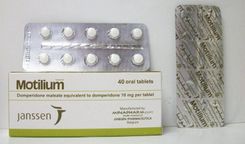Bromazepam, also known by its trade names Lexomil and Bromalex, is a benzodiazepine tranquilizer. It has anti-anxiety and sedative effects. Therefore, before using this medication, users should be aware of the following:
1. General information about Bromazepam
The active ingredient of the drug is Bromazepam, which is classified as a benzodiazepine tranquilizer. Bromazepam is prepared in tablet form with doses of 1.5 mg, 3 mg, and 6 mg.
1.1 Indications for use of Bromazepam:
Bromazepam is indicated for the treatment of patients with emotional disorder (feeling anxious, tense, moody with anxiety - manifestation of depression, easily agitated, insomnia); manifestations of anxiety and stress (functional disorders of the cardiovascular, respiratory, digestive, or urinary systems, as well as other psychosomatic disorders).
There are some cases where Bromazepam is prescribed to treat anxiety and stress related to chronic diseases. In addition, the drug is also used as a psychological therapy to support neuropsychological conditions.
1.2 Contraindications to using Bromazepam
Bromazepam is contraindicated for patients who are hypersensitive to benzodiazepines or for patients with alcoholism or suspected alcoholism or dependence on addictive substances. When used for addiction treatment, strict supervision of Bromazepam is required.
1.3 Dosage and administration of Bromazepam
The usual outpatient dose ranges from 1.5 mg to 3 mg, taken up to three times daily.
In case the patient must be hospitalized, use Bromazepam 6mg to 12mg, 2-3 times/day.
The above guidance is general only. Patients should follow a doctor’s prescription tailored to their health condition.
Outpatients should start with a low dose and increase it gradually until the optimal dose is reached, providing the most effective treatment.
Patients should monitor their health and gradually discontinue the medication after symptom improvement, typically within a few weeks. This gradual withdrawal will help prevent the patient from becoming dependent on Bromazepam. If the patient has been taking the medication for a long time, they should taper off the medication gradually.
When pediatric use of Bromazepam, the dosage must be adjusted according to the child's weight. For elderly and weak patients, a lower dose should be used.
2. Considerations when using Bromazepam
Bromazepam is effective in alleviating anxiety, however, there have been cases where users have experienced some side effects caused by the drug.
Like all medications, Bromazepam can cause side effects ranging from mild to severe. Most side effects are not severe and do not significantly affect users' health.
Older adults (aged 65 and above) are at higher risk of experiencing side effects. While taking Bromazepam to treat a disease, you should tell your doctor or pharmacist if you notice any of the following symptoms:
- Persistent drowsiness or fatigue.
- Dizziness;
- Headaches;
- Muscle weakness.
These are the most frequently reported side effects associated with Bromazepam use.
Contact your doctor immediately if you experience any of the following symptoms, as they may require medical attention:
- Blurred vision;
- Skin rash;
- Shivering, even when not feeling cold;
- Loss of appetite;
- Dry mouth;
- Slurred speech.
- Memory loss, difficulty concentrating, confusion;
- Sudden anxiety or excitement.
- Hallucinations (seeing, hearing, or feeling things that aren't real).
- Frequent nightmares.
In case the user has difficulty breathing or shortness of breath, they should be taken immediately to the nearest medical facility for timely emergency treatment. However, very few people experience this serious side effect.
Consulting your doctor or pharmacist is the best way to protect your health against the risk of side effects when taking medication.
3. Precautions When Using Bromazepam
Bromazepam can exacerbate symptoms of myasthenia gravis, so it should be used with caution.
Bromazepam should only be used during the first trimester of pregnancy when absolutely necessary. It should not be used while breastfeeding, as the drug can pass into breast milk.
Do not drive or operate machinery within 4–6 hours of taking Bromazepam, as it may impair concentration and reflexes. This effect depends on the dosage and individual sensitivity.
Bromazepam can lead to dependence. This risk increases with prolonged use, high doses, or in individuals predisposed to addiction. Symptoms of dependence that often occur when the drug is suddenly stopped include tremors, restlessness, sleep disturbances, anxiety, headaches, and difficulty concentrating. Other symptoms include sweating, muscle and abdominal cramps, altered consciousness, and, in rare cases, delirium and seizures.
Withdrawal symptoms can last from several hours to a week or even longer when the drug is stopped, depending on the drug’s action duration.
To minimize the risk of dependence, benzodiazepines should only be prescribed after a thorough diagnosis and for the shortest period possible, for example, no more than four weeks for insomnia. Regular follow-ups are necessary to determine if continued use is needed. In patients with severe conditions requiring long-term use, weigh the benefits against the risk of dependence.
When discontinuing Bromazepam, taper the dose gradually to avoid withdrawal symptoms. If withdrawal symptoms appear, the patient needs to be closely monitored and cared for.
In summary, Bromazepam is effective for treating anxiety, insomnia, and other neurological issues. Therefore, to ensure safe and effective use, always consult a doctor or pharmacist for appropriate guidance.
Please dial HOTLINE for more information or register for an appointment HERE. Download MyVinmec app to make appointments faster and to manage your bookings easily.













